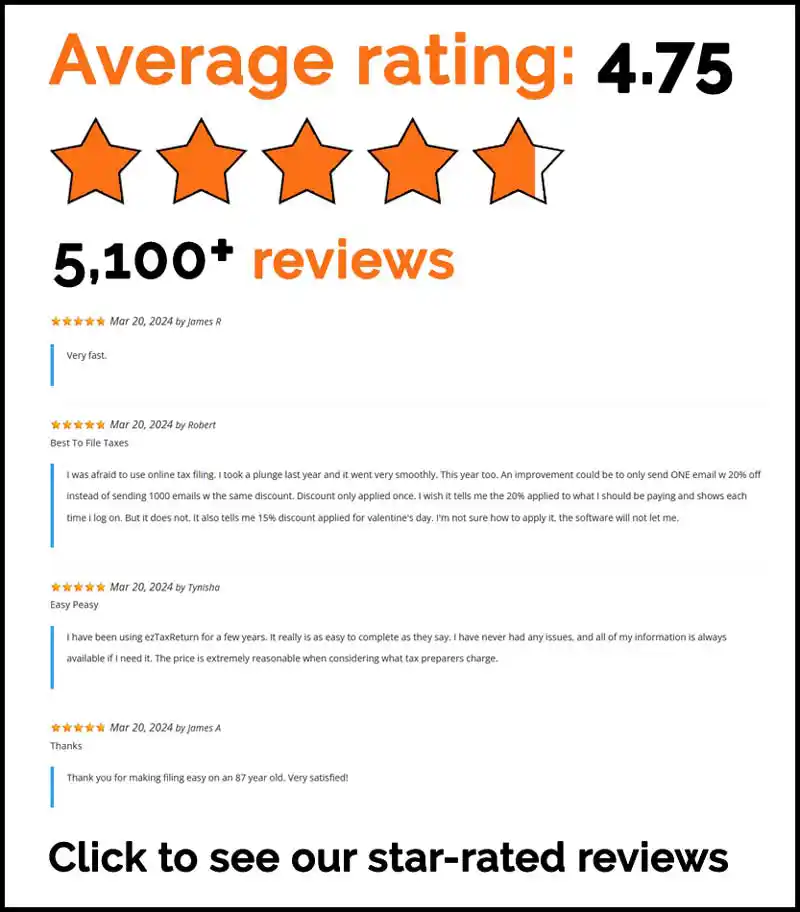When you turn 73, the IRS requires you to take required minimum distributions (RMDs) from certain retirement accounts. This guide will explain what RMDs are, how to calculate them, and the rules you need to follow to avoid penalties.
Key Takeaways
- Starting at age 73, individuals must take required minimum distributions (RMDs) from certain retirement accounts to convert tax-deferred savings into taxable income.
- The RMD amount is calculated by dividing the year-end account balance by a life expectancy factor, which changes annually, making timely and accurate calculations essential.
- Roth IRAs are exempt from RMDs during the owner’s lifetime, but beneficiaries must still adhere to RMD rules after the owner’s death, highlighting the importance of understanding different account rules.
What Is a Required Minimum Distribution (RMD)?
A required minimum distribution (RMD) refers to the mandatory withdrawals that individuals must take from tax-deferred retirement accounts like traditional IRAs starting at age 73. These distributions are not just a suggestion but a legal requirement set by the IRS to ensure that retirement funds are eventually taxed. The first RMD is generally due by April 1 of the year after the account owner reaches their required minimum distribution age. After the first RMD, you must continue to take RMDs by December 31st each year. This rule ensures that retirees begin to draw down their tax-deferred savings, converting them into taxable income, in accordance with the required minimum distribution rules.
Required Minimum Distribution (RMD) Table for 2025
The Uniform Lifetime Table below is the most commonly used table for calculating RMDs. This table applies when the account owner is the primary beneficiary or there is no spouse beneficiary.
Uniform Lifetime Table
| Age | Distribution Period | Age | Distribution Period |
|---|---|---|---|
| 72 | 27.4 | 97 | 7.8 |
| 73 | 26.5 | 98 | 7.3 |
| 74 | 25.5 | 99 | 6.8 |
| 75 | 24.6 | 100 | 6.4 |
| 76 | 23.7 | 101 | 6.0 |
| 77 | 22.9 | 102 | 5.6 |
| 78 | 22.0 | 103 | 5.2 |
| 79 | 21.1 | 104 | 4.9 |
| 80 | 20.2 | 105 | 4.6 |
| 81 | 19.4 | 106 | 4.3 |
| 82 | 18.5 | 107 | 4.1 |
| 83 | 17.7 | 108 | 3.9 |
| 84 | 16.8 | 109 | 3.7 |
| 85 | 16.0 | 110 | 3.5 |
| 86 | 15.2 | 111 | 3.4 |
| 87 | 14.4 | 112 | 3.3 |
| 88 | 13.7 | 113 | 3.1 |
| 89 | 12.9 | 114 | 3.0 |
| 90 | 12.2 | 115 | 2.9 |
| 91 | 11.5 | 116 | 2.8 |
| 92 | 10.8 | 117 | 2.7 |
| 93 | 10.1 | 118 | 2.5 |
| 94 | 9.5 | 119 | 2.3 |
| 95 | 8.9 | 120+ | 2.0 |
| 96 | 8.4 |
How to Calculate Your RMD
There are three main methods for calculating your required minimum distribution (RMD), depending on your situation. Here’s a detailed breakdown of each:
1. Uniform Lifetime Method (most common)
This is the method used by most retirement plan account owners, including those with traditional IRAs, SEP IRAs, SIMPLE IRAs, and employer sponsored retirement plans like 401(k)s. It applies when the account owner is the primary beneficiary or when there is no spouse beneficiary.
- Step 1: Determine the fair market value of your entire account balance as of December 31 of the previous calendar year.
- Step 2: Find your life expectancy factor from the IRS Uniform Lifetime Table. This distribution period reflects your remaining expected lifespan based on your current age.
- Step 3: Calculate your RMD by dividing your account balance by the life expectancy factor. This determines the minimum amount you must withdraw for the current calendar year.
Example: If your account balance is $100,000 and the IRS factor for your age is 25.6, your RMD is $100,000 ÷ 25.6 = $3,906.25.
This method ensures that your retirement funds are distributed over your expected lifetime, gradually depleting the tax deferred account in a tax-efficient manner.
2. Joint Life and Last Survivor Method
This method is applicable if your spouse is the sole primary beneficiary of your retirement account and is more than 10 years younger than you. This situation often arises in qualified retirement plans and traditional IRAs.
- Use the IRS Joint Life and Last Survivor Table, which provides a longer distribution period based on the joint life expectancy of you and your spouse.
- Because the life expectancy factor is longer, your required minimum distribution will generally be smaller compared to the Uniform Lifetime Table.
- This method recognizes that the funds are expected to last longer due to the younger spouse’s age, allowing for reduced annual withdrawals.
3. Single Life Expectancy Method
This method is typically used by beneficiaries of inherited IRAs or other inherited retirement accounts.
- Beneficiaries use the IRS Single Life Expectancy Table, which assigns a life expectancy factor based on the beneficiary’s age at the time they inherit the account.
- The RMD calculation is similar: divide the inherited account balance by the beneficiary’s life expectancy factor.
- This method is crucial for complying with the SECURE Act’s 10-year rule, which requires designated beneficiaries to withdraw the entire account balance within 10 calendar years following the original account owner’s death, except for certain eligible beneficiaries like surviving spouses or individuals not more than 10 years younger.
Additional Considerations
- If you own multiple IRAs or SEP IRAs, you must calculate the RMD separately for each account but can withdraw the total amount from just one account or a combination of accounts. However, for qualified retirement plans such as 401(k)s or SIMPLE IRA accounts, RMDs must be taken separately from each plan.
- The IRS publishes updated life expectancy tables and worksheets annually in Publication 590-B, which account owners and tax advisors use to ensure correct RMD calculations.
- It’s important to note that failing to take your RMD or taking less than the required amount by the RMD deadline can result in a significant IRS penalty. The penalty is currently 25% of the amount not withdrawn, which may be reduced to 10% for IRAs if the shortfall is timely corrected within two years.
By understanding these calculation methods and applying the correct one based on your situation, you can ensure compliance with the required minimum distribution rules and avoid costly penalties.
RMD Rules for Different Accounts
RMD rules vary depending on the type of retirement account you hold. While traditional IRAs have specific requirements, Roth IRAs are generally exempt from RMDs during the retirement plan account owners’ lifetime. Inherited IRAs come with their own set of rules and timelines, and the same rules apply.
Understanding these differences is crucial for effective retirement plan planning and ensuring compliance with the internal revenue service regulations.
Traditional IRAs
For traditional IRA owners, RMDs must begin at age 73. You can delay your first RMD until April 1 of the year after you reach your required minimum distribution age. The amount you need to withdraw is calculated based on the previous year’s account balance divided by your life expectancy factor. This ensures that the withdrawals are proportionate to your life expectancy, helping to deplete the account gradually over time.
If you fail to take your RMD by the deadline, you may face a significant excise tax on the missed amount. This penalty underscores the importance of timely compliance. However, it’s worth noting that you are allowed to withdraw more than the required minimum distribution amount without incurring additional penalties. This flexibility can be useful for managing your retirement funds more effectively.
Roth IRAs
Roth IRAs offer a significant advantage when it comes to RMDs. Unlike traditional IRAs, Roth IRAs are not subject to RMDs during the account owner’s lifetime. This means you can let your investments grow tax-free for as long as you want, providing greater flexibility in managing your retirement funds.
However, it’s important to note that beneficiaries of Roth IRAs must adhere to RMD guidelines after the original account owner’s death. This ensures that the funds are eventually distributed and taxed, even though the original owner did not have to take withdrawals.
Inherited IRAs
Inherited IRAs come with specific rules that beneficiaries must follow. Designated beneficiaries must fully withdraw the inherited IRA balance within 10 years after the original owner’s death. This rule ensures that the funds are eventually distributed and taxed, preventing indefinite tax deferral.
If the original IRA owner passed away before reaching RMD age, beneficiaries have the option to withdraw the funds over their lifetime or within five years. Understanding these timelines and requirements is crucial to avoid penalties and ensure you comply with IRS rules.
Tax Implications of RMDs
RMDs are considered taxable income and must be reported on your tax return. If all contributions to your IRA were tax-deductible, the entire RMD amount is treated as ordinary income for the year it is withdrawn. This can significantly impact your overall taxable income, potentially pushing you into a higher tax bracket.
To mitigate the tax impact of RMDs, you might consider strategies like Qualified Charitable Distributions (QCDs). QCDs allow you to donate up to $100,000 of your RMD directly to a charity, reducing your taxable income. This can be a valuable strategy for those who are charitably inclined and looking to minimize their tax liability.
You can have taxes withheld from your RMD to manage your cash flow and ensure funds are available to pay taxes on your tax bill. Consulting a tax advisor can help you navigate these options and develop a plan for tax withholding that minimizes your tax burden while ensuring compliance with IRS rules.
Strategies to Manage RMDs
Managing RMDs effectively requires careful planning and strategic thinking. One popular strategy is to start withdrawing funds from your tax deferred account as early as age 59½. This can help spread out your withdrawals and potentially keep you in a lower tax bracket.
Another strategy involves converting traditional IRA funds to a Roth IRA. Since Roth IRAs do not require RMDs during the account owner’s lifetime, this conversion can help minimize future RMD obligations. Converting to a Roth IRA involves paying taxes on the converted amount, so this should be done with careful consideration and possibly the help of a financial advisor.
You can also reinvest your RMD in a taxable investment account, use it to fund a 529 education plan, or make charitable donations through QCDs. These strategies offer various ways to put your RMD to good use while potentially reducing your tax burden.
Penalties for Missing RMD Deadlines
Failing to take your RMD by the deadline can result in a hefty penalty of 25% on the amount not withdrawn. This penalty underscores the importance of timely compliance with RMD rules. If you delay taking your RMD, correcting the missed RMD within two years may reduce the penalty to 10% for IRAs.
You can petition the IRS for relief from tax penalty if you demonstrate that the failure to take the RMD was due to reasonable error. This can provide some flexibility, but it’s always best to plan ahead and ensure you meet your RMD obligations on time.
Summary
Understanding and managing your RMDs is crucial for effective retirement planning. By following the rules, accurately calculating your RMDs, and considering strategies to manage their impact, you can ensure a more secure and tax-efficient retirement.
Frequently Asked Questions
When do I need to start taking RMDs?
You need to start taking RMDs at age 73, with your first withdrawal due by April 1 of the year after you turn 73. Make sure to mark your calendar!
Do Roth IRAs require RMDs?
Nope, Roth IRAs don’t have required minimum distributions while you’re alive, but your beneficiaries will need to take RMDs after you pass away. It’s a great way to keep your retirement savings growing longer!
How are RMDs calculated?
RMDs are calculated by taking the fair market value of your retirement account and dividing it by your life expectancy factor from IRS tables. This gives you the minimum amount you need to withdraw each year.
What happens if I miss the RMD deadline?
If you miss the RMD deadline, you’ll face a hefty penalty of 25% on the amount you should have withdrawn. However, if you fix it within two years, you can reduce that penalty to 10% for IRAs. It’s worth getting on top of it to avoid those fees!
Can I donate my RMD to charity?
Absolutely! You can donate your RMD to charity using a Qualified Charitable Distribution (QCD), which lets you give up to $100,000 directly to a charity while lowering your taxable income.
Enjoy Peace of Mind This Tax Season
Filing your taxes doesn’t have to be stressful. ezTaxReturn makes it quick, easy, and perfect for retirees.
The articles and content published on this blog are provided for informational purposes only. The information presented is not intended to be, and should not be taken as, legal, financial, or professional advice. Readers are advised to seek appropriate professional guidance and conduct their own due diligence before making any decisions based on the information provided.




